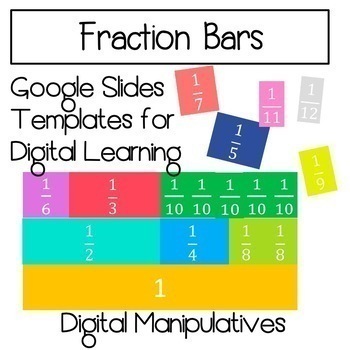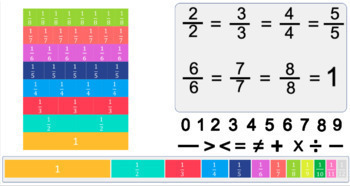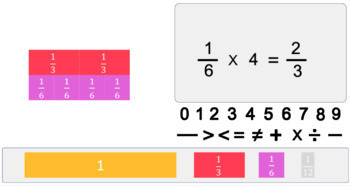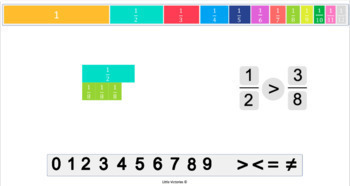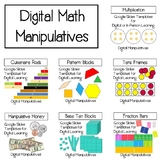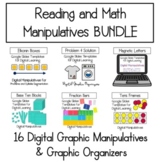Fraction Bar Digital Manipulatives on Google Slides- for Distance Learning!
- Google Slides™
- Internet Activities

What educators are saying
Also included in
- Take your math instruction to the next level with these digital math manipulatives!This product comes with 10 Google Slides Digital Manipulate Templates that you can customize to create an endless number of interactive lessons to present virtually to your students. They also work great on the SmartPrice $24.00Original Price $34.50Save $10.50
- This is a GROWING bundle! As new graphic organizers are added, you'll get access to them for no additional cost! This bundle includes ALL of my digital manipulatives and digital graphics organizers for reading and math!Included Digital ManipulativesPhonics and Writing and Comprehension:Magnetic LetPrice $38.00Original Price $55.50Save $17.50
Description
Have fun creating visual representations of fraction math problems and exploring the relationships between fractions! Also called fractions strips!
These are a great resource for exploring equivalent fractions, adding, subtracting, and multiplying fractions, and comparing fractions. Factions can be abstract for many students. These will help make digital learning more concrete for your students.
Your download will come with a seven page template, that you can make endless copies of for creating lessons, practice questions, and assessments.
Simply share a copy with your students, so students can work directly in the template!
Click and drag the fraction bars to explore their relationships!
Slides include Templates for:
- 3 Slides with Open Work Spaces
- 3 Slides with work space to arrange your fractions and a work space to create number sentences
- Whole, half, fourth, and eight fraction bars
- Whole, third, sixth, and twelfth fraction bars
- Whole, half, third, fourth, fifth, sixth, seventh, eighth, ninth, tenth, eleventh, and twelfth fraction bars
- 1 Slide with a template for easily writing comparison statements with fractions!
You will get your personal copy of the Google Slide Template so you can build ENDLESS LESSONS AND ACTIVITIES!
Feel free to share a copy with every student in your class or on your caseload!
Instructions for resetting the template are included, so you can quickly prepare for your next lesson.
Don't forget to follow Little Victories by clicking the Green Star above!
Looking for more Digital Manipulatives?

